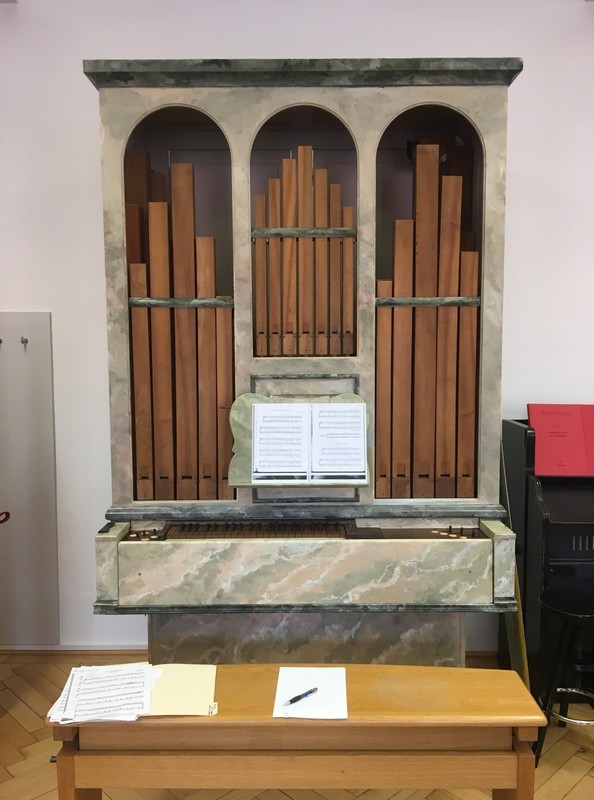An organo di legno for Paul Hindemith
At the time that the Silberne Kapelle organ was reinstalled in the 1950s, interest in performing early music on period instruments was growing in Europe and the USA. A major proponent of this movement was the composer Paul Hindemith, who championed performance on historical instruments during his time at Yale University, where he led the Collegium Musicum in the 1940s. The ensemble presented an in-house performance of Monteverdi’s L’Orfeo in 1944, as part of a course on the history of music theory that Hindemith was teaching at the time. A decade later, Hindemith reprised opera for a performance during a music festival at the Konzerthaus in Vienna in June 1954.
Many of the instruments that had made up Monteverdi’s orchestra in the early 1600s were little known in the 1950s. A fortuitous list of instruments printed at the beginning of the earliest editions of L’Orfeo (1609 and 1615) allowed Hindemith and his colleagues (including Nikolaus Harnoncourt) to reconstruct Monteverdi’s orchestra. They spent considerable resources cobbling together a band that included antique instruments from museum and private collections, and modern reconstructions.
The resulting ensemble was extraordinary: it included a sixteenth-century Italian regal, a reconstruction of a Renaissance double harp, recorders made by Dolmetsch (an English pioneering family of the early music movement), modern harpsichords made by the Ammer brothers of Thuringia, an eighteenth-century lute by Matthaeus Stautinger, modern brass instruments, an eighteenth-century German Positiv organ, and historical viols of Parisian, Brescian, and Viennese origin.
Also included in the orchestra was an organo di legno newly made by the musician Josef Mertin. In his introductory remarks to the audience at the performance, Hindemith explained that the organ “was specially built by Professor Mertin for the present purpose”; as “an exact copy of an organ from that time,” referring to the organo di legno in Innsbruck, which Mertin had studied.
In reality, Mertin’s organ differs in considerable ways from the Innsbruck organ. And, moreover, as described here the restoration of the instrument in 1950-52 removed it considerably from its earlier state. Thus, the organ that Mertin studied only vaguely resembled its seventeenth-century self. Mertin’s organ is now housed at the University of Music and Performing Arts Vienna, where it continues to be played.
The foundational stop of Mertin’s organ, the (wooden) Principal 8’, can be heard in the sound clip.
Citation: Leon Chisholm, ‘The organo di legno’s timbral timber’, in: Materiality of Musical Instruments. A Virtual Exhibition.

